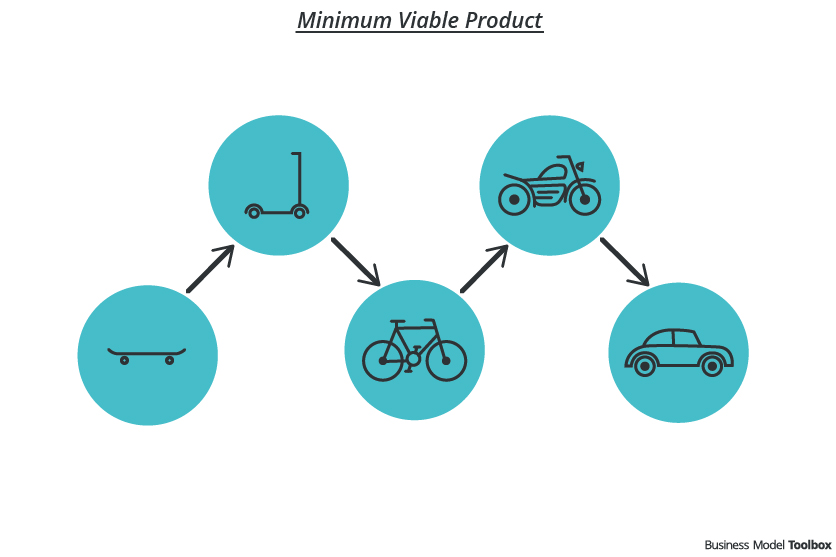Minimum Viable Product (MVP)

Eric Ries – Lean Startup
Description
“The first version of Gmail was literally written in a day.” – Paul Buchheit
So, the minimum viable product is that product which has just
those features (and no more) that allows you to ship a product
that resonates with early adopters; some of whom will pay you
money or give you feedback. — Eric Ries
The concept of the MVP became popular with Eric Ries’s approach, in his book ”Lean Startup“.
The aim of a MVP is to avoid the risk of building products or services that nobody wants. Eric Ries defines the MPV ”The minimum viable product is that version of a new product which allows a team to collect the maximum amount of validated learning about customers with the least effort“. For example, Dropbox used the concept of a MVP and created a 3-minute explanatory video in order to demonstrate the product. Their sign-ups went up from 5,000 people to 75,000 overnight — without having a real product.
Strengths
- Allows fast learning and reduces cost of failure
- Helps you “get out of the building” instead of working on your idea without any feedback
- Minimize risk of building products or services that nobody wants
- Customer feedback can help you shape the value proposition
Weakness
- Requires commitment to iterate or even pivot the idea
- Risk of focusing only on minimum features and dismiss the viability part
Application
Use a Canvas Model or the Value Network and identify the core of your idea to test or the biggest assumption in your business model that needs to be verified.
When reducing to the core of your idea you need to take care that the MVP stays desirable (= attractive / valuable)
- Launch a landing page
- Publish short introduction video with an option to sign in for updates
- Test with Search Engine Marketing on $5 a day
- Paper Prototype
- Pretend an automated service is in place
Have a look to the Examples on this page to see how a MVP can look like.
Consider the aspects of responsibility (raw materials, resources, transparency) when designing and testing your MVP
View on Responsibility
Examples
Dropbox
Their challenge was to demonstrate the working software in a prototype form. Therefore they decided to test it with a short video that explains the value and core functions >> “It drove hundreds of thousands of people to the website. Our beta waiting list went from 5000 people to 75000 people literally overnight. It totally blew us away.”
Resources
- Book and Webpage: Lean Startup by Eric Ries
- Techcrunch: How to create a Minimum Viable Product?
- Eric Ries: Venture Hacks interview: What is the minimum viable product?
- Eric Ries: Minimum Viable Product: a guide
- The Tyranny of the Minimum Viable Product
- Techcrunch: 15 ways to test your minimum viable product

